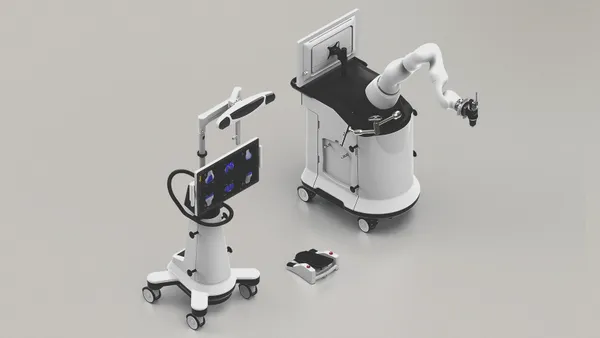Dive Brief:
-
Tests for BRCA mutations from BGI and Myriad Genetics have enabled AstraZeneca and Merck & Co. to show PARP inhibitor Lynparza is highly effective in a subpopulation of patients with ovarian cancer.
-
Patients outside of China, who made up most of the study population, were enrolled on the strength of results from Myriad's BRACAnalysis CDx test and then had their genetic status validated retrospectively by Foundation Medicine.
-
Myriad plans to file a supplementary premarket approval application to the FDA to expand the use of its companion diagnostic to the new population.
Dive Insight:
The mechanism of action of drugs that inhibit PARP suggests BRCA mutation status is critical to their efficacy. Lynparza, the first FDA-approved PARP inhibitor, initially came to market in ovarian cancer patients with defective BRCA genes. Myriad’s companion diagnostic, BRACAnalysis CDx, was cleared alongside Lynparza to enable physicians to detect BRCA mutations in blood samples.
That initial approval, plus later label expansions and treatment guidelines, positioned Lynparza as a treatment for ovarian cancer patients who were running out of options. To thrust their PARP inhibitor into first-line use, AstraZeneca and Merck ran a trial in patients newly diagnosed with ovarian cancer.
Myriad's BRACAnalysis CDx test was central to the study. Of the 391 patients randomized in the trial, 210 already knew their BRCA status. Investigators confirmed the accuracy of these prior diagnostic tests by sending samples to China-based BGI, if the patient was in China, or to Myriad’s lab in the U.S. All but three of prior diagnoses were confirmed by BGI and Myriad. The three incorrectly-identified patients had either wild-type BRCA or "a BRCA variant of uncertain significance."
Another 181 previously-untested patients were randomized after BGI and Myriad found they had mutations on either BRCA1, BRCA2 or both. Around 70% of patients had mutations on BRCA1. Most of the other patients had BRCA2 mutations. Just three patients had mutations on both genes.
Investigators enrolled patients on the strength of results from BGI and Myriad but later checked their genetic status by sending tumor samples to Foundation Medicine. The Roche subsidiary used its FoundationOne CDx Clinical Trial Assay to confirm that tumor BRCA status was the same as germline BRCA results generated by BGI and Myriad.
Foundation Medicine found some discrepancies. Of the 341 patients with samples FMI was able to analyze, 324 had confirmed tumor BRCA mutations. The researchers attributed the discordance between the germline and tumor BRCA results to “differences in test coverage, variant classification and detection of large rearrangements.”
If the discordance had any effect on the trial, its impact was too small to stop it from succeeding. The trial linked Lynparza to a 70% reduction in the risk of disease progression or death, teeing AstraZeneca and Merck up to file for approval as a first-line maintenance therapy. Myriad plans to support the expansion by seeking clearance to use BRACAnalysis CDx in the new population.












